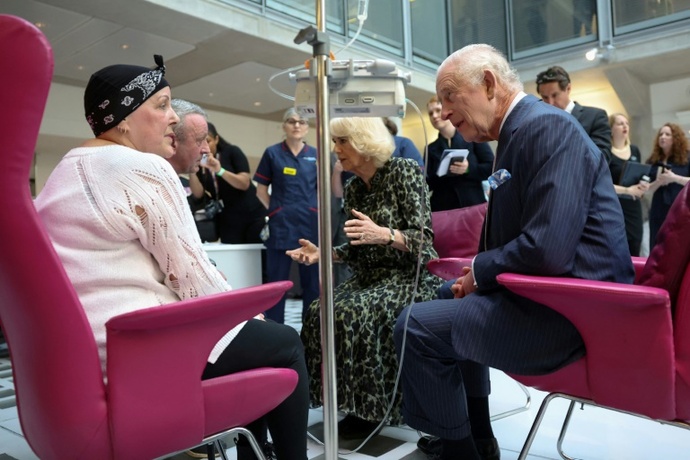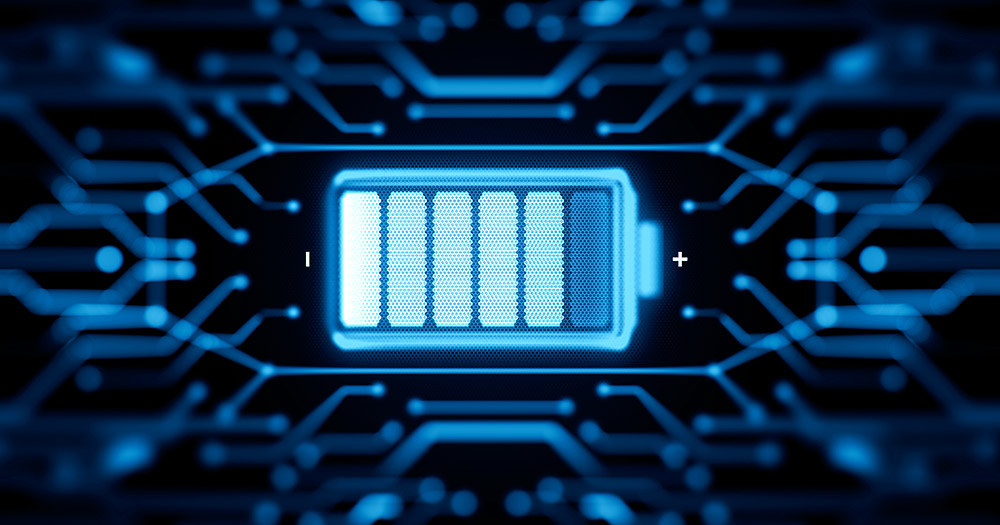It's all about charging: A very simple procedure can dramatically increase the life of common lithium-ion batteries, an experiment has revealed. If batteries are charged with a rapidly changing pulse voltage, this reduces the usual loss of charging capacity – also known as the memory effect. In testing, lithium-ion batteries lasted twice as many charging cycles as usual. Analysis revealed the reason behind this.
They are found in mobile phones, laptops and cameras, but they are also found in electric cars and aircraft electronics: lithium-ion batteries are almost indispensable for today's technology. Batteries have a relatively high energy density and can be charged and discharged frequently. However, the lifespan of lithium-ion batteries is also limited: the best commercially available lithium-ion batteries have a lifespan of five to eight years, after which their charging capacity drops below 80 percent – and they become inefficient.
Problem: When charging and discharging, electrochemical reactions occur that permanently damage the electrode material. Small cracks and peeling occur. At the same time, lithium is increasingly deposited on the anode. This growing layer – the so-called solid electrolyte interface (SEI) – disrupts the interactions and reduces the battery's charging capacity more and more over time. Fast charging in particular usually shortens the life of batteries.
Shipping protocol on the horizon
Jia Guo of Humboldt University in Berlin and his colleagues may have found a solution to this problem. They investigated whether a variable charging protocol could slow or prevent lithium-ion battery degradation. Until now, batteries have typically been charged using a fairly constant alternating current. The research team has now investigated whether rapid changes in power supply and interruptions can increase the life of batteries.
To do this, scientists subjected different types of 18650 lithium-ion batteries to either standard static charging cycles or high-frequency pulse charging. Finally, the voltage changes at a frequency of 100 or 2000 Hz.
Double lifetime
The result: Lithium-ion batteries with a normal, continuous charging protocol lost about 20% of their capacity in just 500 charging cycles, and after 1,000 cycles, their charging capacity was only 37.8%. “In stark contrast, performance remains significantly higher with pulsed charging,” the team says. With a 100 Hz pulse, there is still 66.5 percent of capacity remaining after 1,000 charging cycles, and with 2,000 Hz up to about 82 percent.
“The service life of the battery more than doubles with this high-frequency charging protocol,” say Gu and his colleagues. Charging with rapidly changing sequences of voltage supplies and pauses appears to delay the aging of batteries. but why? This was revealed by careful analyzes of the BESSY II X-ray source.

Less damage and debris
The analyzes showed clear differences in the internal workings of the batteries according to different charging protocols: “Pulsed current charging promotes homogeneous distribution of lithium ions in the graphite. This reduces mechanical stress and crack formation in the graphite particles, so that the graphite anode remains stable for a longer time,” said co-author Yaolin. Shaw from the Helmholtz Center Berlin for Materials and Energy (HZB).
In addition, pulse charging also prevents electrolyte breakdown and growth of a disruptive SEI layer on the battery's graphite anode. Although this also creates deposits, they are more malleable and grow more slowly thanks to the higher proportion of organic molecules, the team found.
Promising approach
According to scientists, this opens up a promising and simple way to make lithium-ion batteries last longer. “Pulsed charging can bring many advantages in terms of stability of electrode and interface materials and significantly extend the service life of batteries,” explains co-author Julia Kowal from Technische Universität Berlin.
However, more research is still needed on where the ideal pulse duration lies. “Our study has already shown that the relatively high frequency of 2000 Hz is beneficial,” explain Gu and his team. “So it would be interesting to test higher frequencies.” (Advanced Energy Materials, 2024; doi: 10.1002/aenm.202400190)
Source: Helmholtz Center Berlin for Materials and Energy GmbH
April 10, 2024 – Nadia Podbrigar

“Tv expert. Hardcore creator. Extreme music fan. Lifelong twitter geek. Certified travel enthusiast. Baconaholic. Pop culture nerd. Reader. Freelance student.”







More Stories
Temporary solution for Max Joseph Platz: Green Center in front of the Opera – Munich
The square in front of the Opera House in Munich: this is how Max Joseph Platz is rebuilt
“Spiders on Mars” – Here's What's Behind It – News